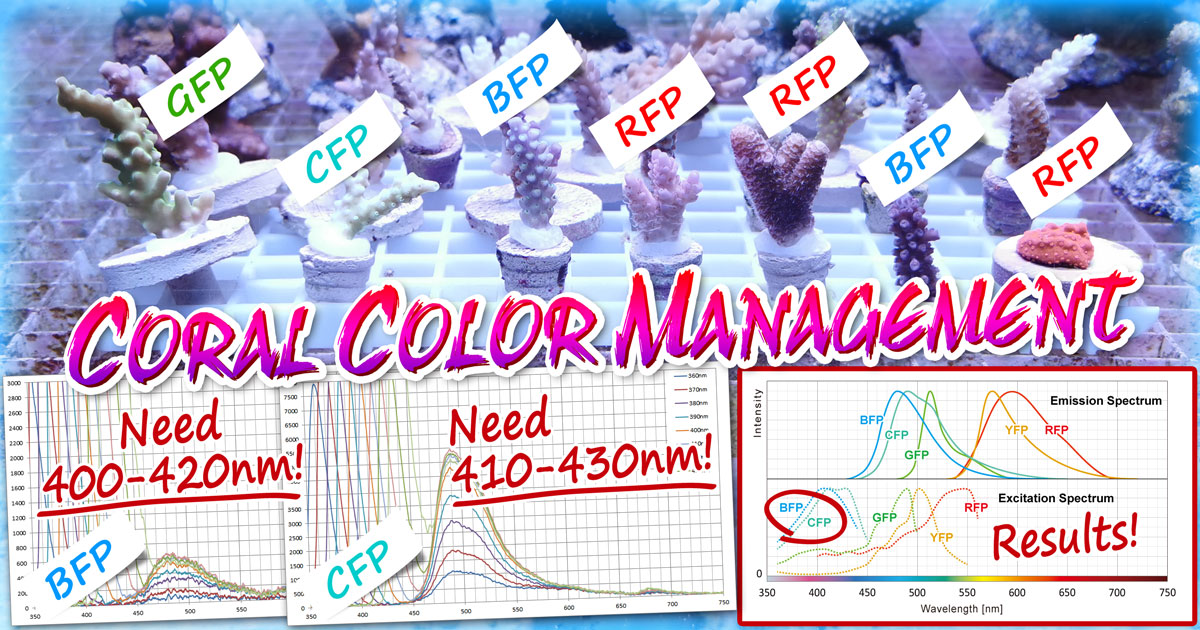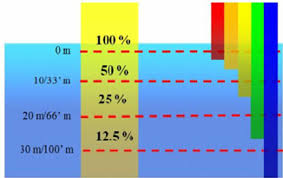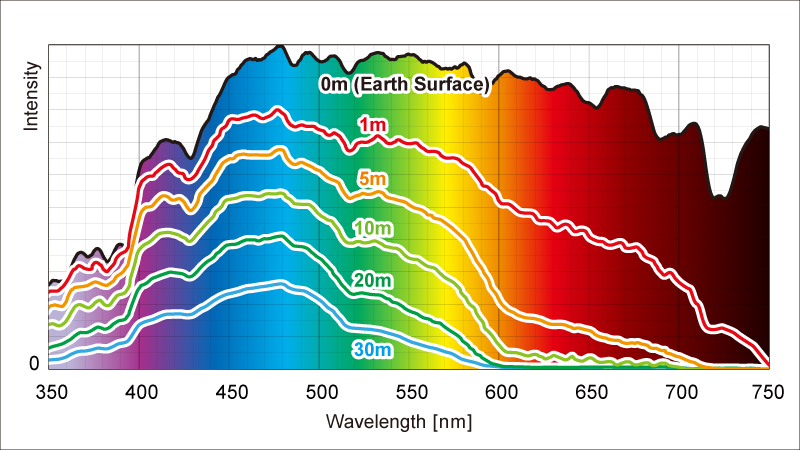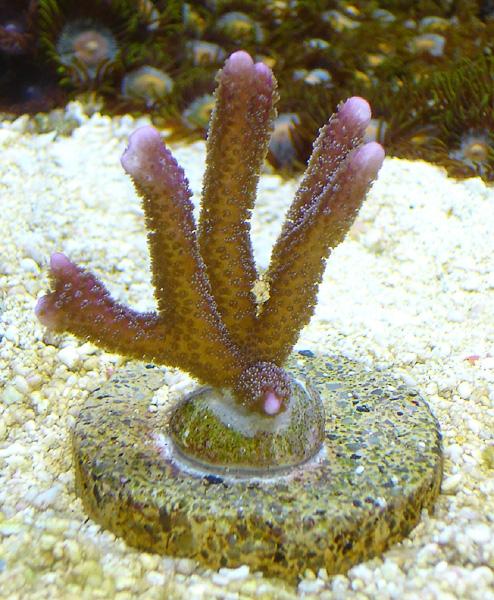- Joined
- Sep 18, 2017
- Messages
- 5,593
- Reaction score
- 3,440
No that is a physics fact .Ok, certain components of a “white light” are at a lower magnitude at that depth, or that’s what some people will want you to believe.
Follow along with the video below to see how to install our site as a web app on your home screen.
Note: This feature may not be available in some browsers.
No that is a physics fact .Ok, certain components of a “white light” are at a lower magnitude at that depth, or that’s what some people will want you to believe.
Great article has someone buy their leds?Here is an interesting article on this topic. In particular the role of various wavelengths in photosynthesis, fluorescence and color protein growth.

Coral Color Management|BlueHarbor
This is a coral color management theory created by scientifically understanding the color of coral from an optical perspective.www.blueharbor.co.jp
Where can I find this write up?Full spectrum is very important to maximize coral growth and bring out coloration. ReefWholesale has a decent write up on their conclusions for radion spectrums that worked best for each type of coral.
If you look up spectrums for the most respected coral vendors (WWC, jason fox, reef raft, battlecorals, etc) all of them use full spectrum in some way. There is significant variation in how much from (T5 equivalent) 30 FS 70 Act to 10 FS 90 Act.
Some of the best tanks I have seen in person use AB+ schedule radions or 14k halides with reef Brite strips or a T5 halide hybrid with actinics for some extra blue.
Didn't I link a video earlier that showed what happened to most of the spectrum under water?Another graph by someone who has not been at that depth to speak from experience.
That's the problem with graphs and data points with no experience, you can pretend to know but until you experience it you don't.
It's like reading 20 books on riding a bike, but never actually having seen a bike, in the end you will not know how to ride it.
Wait, so what google images graph are we supposed to believe? This or the other one posted?No that is a physics fact .

Wait, so what google images graph are we supposed to believe? This or the other one posted?

I have dived to 80 ft...Another graph by someone who has not been at that depth to speak from experience.
That's the problem with graphs and data points with no experience, you can pretend to know but until you experience it you don't.
It's like reading 20 books on riding a bike, but never actually having seen a bike, in the end you will not know how to ride it.
I have dived to 80 ft...
You can make the argument that the corals we tend to keep are more likely to inhabit the top 10m where the effect is much less pronounced, but you can't make the case that seawater reduces the intensity of UV and IR light disproportionately to the lesser reduction in blue and green. That is a fact of physics.
The posting of the graph is to make it easier for those who have no background in physics to understand. If I bring up differential photon refraction, you might get confused.

Two of the main components that modulate UV attenuation in the water column are phytoplankton and chromophoric dissolved organic matter (CDOM)....Phytoplankton and CDOM both modulated UV attenuation, but CDOM was found to be the key driver despite the lack of riverine inputs.
Coral Lab one: https://www.google.com/url?sa=t&sou...wQFnoECAMQAQ&usg=AOvVaw0vAG2Dmlph6cjB5CQesnuTWhere can I find this write up?
Ah that is the ecotec study, we are many not believing it, never could get this results with their lights..Coral Lab one: https://www.google.com/url?sa=t&sou...wQFnoECAMQAQ&usg=AOvVaw0vAG2Dmlph6cjB5CQesnuT
WWC was in one of their youtube videos. I don't remember which one and don't care to watch through every one to find it.
Getting personal haha. Seems to be about par for the course for you.
Apparently the US school system IS failing .
ANY light attenuation graph shows the same thing
Yes differs by water clarity, biodiversity ect but all point in the same direction .
Light in the Ocean | manoa.hawaii.edu/ExploringOurFluidEarth
manoa.hawaii.edu
Sorry..maybe if I put a smiley face after it?Getting personal haha. Seems to be about par for the course for you.
I don’t know if anyone has bought them, but the theory sounds interesting.Great article has someone buy their leds?
No, no that’s ok. Level heads will prevail.Sorry..maybe if I put a smiley face after it?
Vid from Reefbums states things like that are fairly rare..not sure about that.The coral biologist in the Coral Sea told us that UV and usable IR can get to 10m out where the coral is - they try and keep their AQ sites around 5m for both the light and also that they can be maintained with hoses and mouthpieces. Keep in mind that am mostly interested in acropora so that is all that I asked about.
I am pretty sure that all of these get a pretty wide spectrum. Dude said that they can cut out a 10-12 inch section from some of these and you cannot even tell a few weeks later. This is not my photo and this area is protected, but this is pretty typical of where most acropora come from... waist deep, or shallower.


